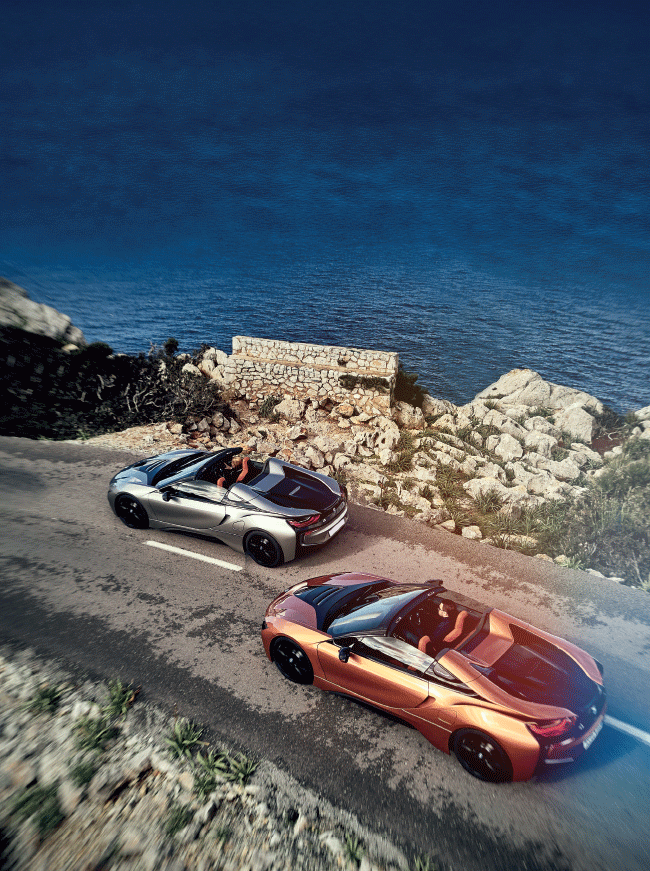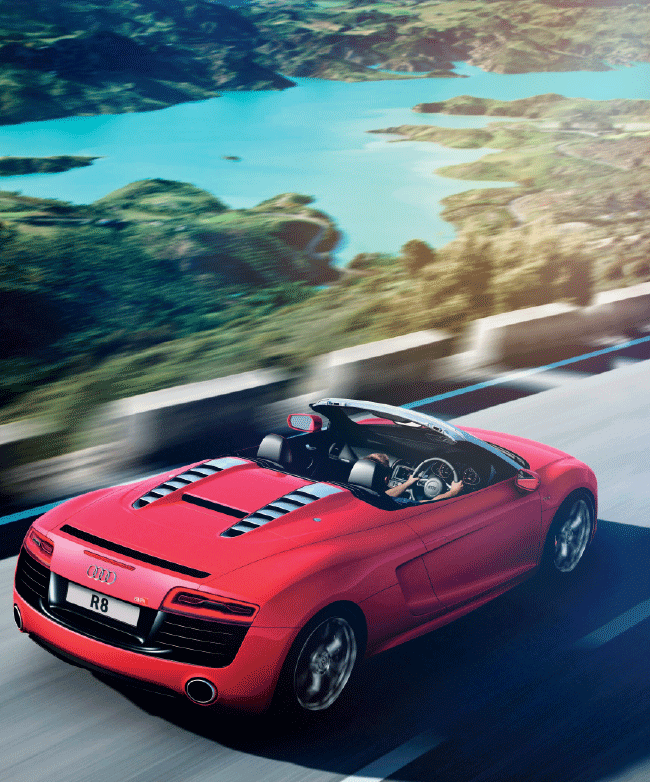Trend forecasters, like weather predictors, are all over the place for 2019. Most point to a motoring slowdown both in terms of manufacturing and appetite, but the canny understand the attraction of an emotional decision. And so it is that convertibles – those endlessly desirable symbols of freedom – remain upmost in the line-up of the year’s freshly turned-out débutantes. If the world’s getting hotter, take your top off…
Jaguar F-Type SVR convertible
In motoring circles it’s more or less a slam dunk that Aston Martin and Jaguar make the most mellifluous engines – symphonies to make Rachmaninov cry – given a bit of wellie, the right electronic setting and an open stretch of road. So opening up the Jaguar F-Type SVR convertible in the Huguenot tunnel rates as one of motoring’s greatest moments.
The 5-litre V8 supercharged work of art (likely not long for this green-obsessed world) howls at the slightest provocation, intent on letting the dogs out. Or horses – 575 of them in Brit parlance, 423 kW for the Saffers, 700 Nm of torque waiting for race mode to be engaged so that hooligan hoorahs can come out to play.
Still, Jag’s flagship F-Type can be a pussycat, retract its claws and cruise Sunset Boulevard with the rest of the fat chump posers. But then save yourself a million rand and opt for F-Type’s latest incarnation, the 2-litre four-pot ‘clean engine’ convertible, still entertaining but not delicious; tonic, no gin. Because exercise is what the SVR really loves… Empty roads, a sense of bygone individualism, machine and master in a fragrant tunnel of sensation and smiles.
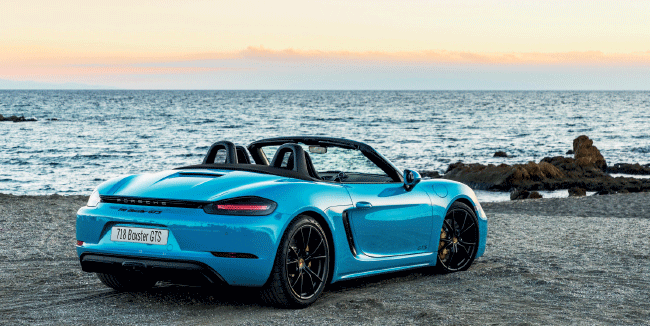
Porsche 718 Boxster GTS
Porsche, they of the more-or-less indestructible sports car and ever-baffling model range, are settling down after the largest change in their long history – the replacement of the Boxster flat six with a four-cylinder turbocharged engine into some of the range. Dust settled, the company hasn’t imploded, customers haven’t torched the dealerships, life goes on. And out of the evolutionary process comes the latest Boxster GTS, Porsche’s baby 911, post-milk teeth, with enough bite to see off the Audi TT RS and (old) BMW Z4 (269 kW, 430 Nm).
The Boxster’s driven wheels are still at the back (hallelujah), the four-cylinder engine is in the middle rather than hanging off the tail (for better balance) and the sports interior is now digitally à la mode, big-screen elegant and able to offer verbal assistance for everything from phone-a-friend to whether you want your air con andante or allegro. And while Geeters should all be red (with black detailing) as demanded by Porsche lore, Stuttgart has buckled to public pressure and you can ask for your GTS in white and other hues.
The gearbox is another sign of the times – Porsche’s admittedly very good seven-speed automatic transmission is now more or less standard in SA, given creeping gridlock and mobile-phone-busy hands. But manage to get your hands on a slick manual and a new world will open up, so good is the self-shifter; it’s the difference between watching the Open and being on the green, nailing that technical putt in front of millions.
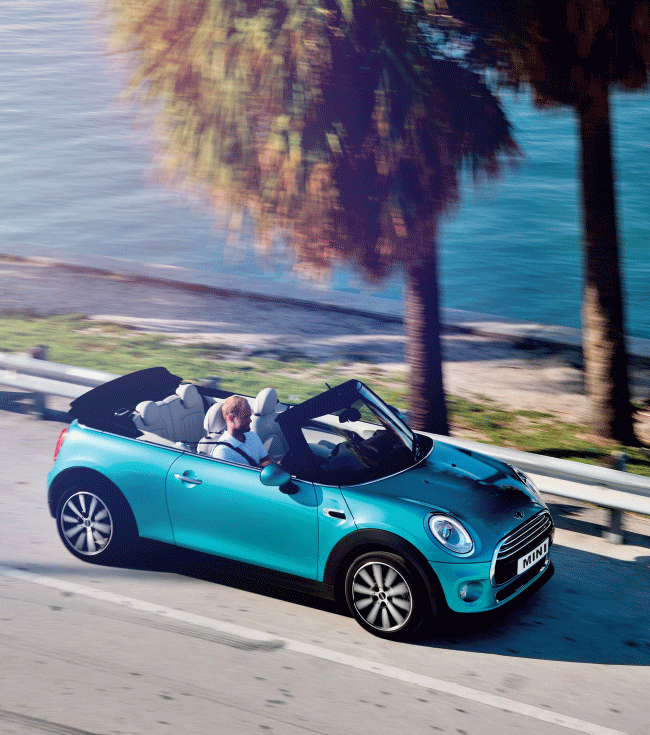
Mini Convertible Cooper S Convertible sports-auto
Bigger and bigger, though not necessarily better-looking, the Mini family has, over the years, grown to accommodate real people with real lives (witness the successfully re-imagined, very sophisticated Clubman and less well-conceived five-door Cooper). With the demise of the roadster and coupé, it is left to the convertible to carry the fun kudos for the brand and this it does mostly well.
The latest incarnation retains the three-phase opening cloth roof as well as the post-Tonka toy interior, now acceptable to over-16s. Google Inc touches still abound, however: cheeky little messages when you change settings; your name in the downlighters; Union Jack rear light lenses; and that light show around the massive central display when you put your foot down. More important is the inclusion of parent company BMW’s latest dual-clutch automatic transmission, with optional paddle shifters. It’s a slick set-up, ideal for contemporary traffic, unobtrusive and quick to find a ratio, rarely caught out in that typical dual-clutch approaching-the-lights change up/down confusion.
It’s well mated to the Cooper S engine too, meaning there’s plenty of immediate torque off the start, lag noticeably lacking. On the road, the chassis strengthening has paid dividends – there’s precious little scuttle shake, even if the weight has slightly dulled the immediacy of the whole experience. Steering is, if anything, even sharper than before (perhaps too much so for the vague brigade) and the suspension set-up has hit the sweet spot – firm but comfortable, unlike the first iterations all those years ago. It’s perfectly possible to now have your coffee and drink it in this Mini; no more hot crotch moments over manhole covers.
Mazda MX-5 2.0 RF auto
The discontinuation of the ‘ordinary’ soft-top MX-5 in SA rates as one of the great automotive crimes of the past few years, the little tiger being about as close to motoring purity as it is possible to get these days. It lives on in the heavier tin-cap RF, however, with its folding metal roof and automatic gearbox, not as pure but likely a sound business decision. The new elements, the roof and gearbox, work perfectly well, and in such a tiny car it is astonishing that the engineers have managed to find a way of folding a metal roof away without intruding on existing boot space.
The answer is partially in the design: it’s essentially a targa rather than a convertible, the rear buttress a solid unit that lifts to allow the overhead roof panel to rest underneath it, meaning there’s less of the 1960s Elan about the little Mazda; more protection, more caring, less adventure. The quick, direct automatic box is equally sensible and works well with the naturally aspirated 2-litre. And while the 118 kW might seem unexceptional on paper, there’s more than enough grunt to explore the outer reaches of chassis behaviour; go-cart has never been more appropriate. Weight? Certainly, there’s an edge missing here compared to the manual soft top but in the final equation, the RF makes the most sense in our clogged, frantic world.
BMW i8 Roadster
BMW’s cross between the Millennium Falcon and a frisbee has had a mid-life barbershop bit-off-the-top to give it new life. New wheel designs, a lighter windscreen frame and tweaks to the suspension suggest ongoing attempts at reducing weight in a car that needs to be as light as possible to make sense.
On the road, it feels demonstrably different to its coupé cousin – firmer, less agile and lacking some of that trademark i8 lightness of touch. It has to do with both suspension set-up and the extra weight (just 60 kg, says BMW). The result is a far more ordinary experience; i8’s genius is that it feels like the future – that low-flying soundtrack, Star Trek interior and overall nimbleness. The Roadster loses some of that dexterity and, driven back-to-back with the coupé, it’s an entirely different car. Nor is the roof the best realisation of the convertible dream; it too is targa-esque. At least the gullwing doors remain.
The crucial bit underneath the driver has been tweaked too – the cell capacity of the Li-ion battery has been increased to 34 Ah, while gross energy capacity is up from 7.1 kWh to 11.6 kWh. Essentially that means you can go further and faster, 53 km on pure electric and you’ll get to 100 km/h in 4.6 seconds if you call on both the front-located electric motor and mid-engine 1.5-litre turbocharged three-cylinder petrol engine. But the most fun is to be had sailing along at 120 km/h in pure electric eDrive mode, all that torque ready in a millisecond.
Mercedes-AMG C-Class C43 cabriolet 4Matic
Mercedes-Benz’s transition from chariot of the dribblers to Kanye West cool-mobile is more or less complete. Only the retiree’s favourite, the B-Class, is a remnant of the old guard – the rest of the fleet transformed into Instagrammable envy wagons, every one, none more so than the C43 Cabriolet. In the world of AMG, the C63 is the old-school barnstormer, a larrikin V8 offering plenty of brown-pant moments as it battles to rewrite the immutable laws of physics. The new C43 is more rational entertainment.
The silky V6 delivers on crucial AMG aural requirements and the new all-wheel drive system ensures a safe journey back to the pot roast and pumpkin in the evenings, no matter what the forked-tail fiend suggests you do on the way home.
Rational but not castrated; the V6 gets more power care of larger turbos taken from the E43, lifting its peak power from 270 to 287 kW, adequate by any yardstick. Inside there are important info-tainment upgrades too – the dual screens and elegant steering wheel point to Benz’s next-level MBUX interface, a big leap forward for Merc that is most welcome and sorts out many of the clunky operational issues of the old system.
Ford Mustang convertible
Ford’s Mustang alchemy has been selling blue-collar bravado to white-collar dreamers, lashings of nostalgia being the key ingredient. Dynamically and on the sales chart, the Fastback comprehensively outperforms the topless Pony, but the attraction of a contemporary Bond mobile is strong – and great for sales of other, less engaging Fords. So, new it might not be, but desirable it most definitely still is.
A recap: the plush four-seater convertible is available with either 2.3-litre 4-cylinder or 5-litre V8 engines and the effect is surprisingly similar – excellent low-down grunt, fun by the bucketful. And under all that historic imitation (the chrome rocker switches, deep cowls, overstuffed transmission tunnel) lurks a very modern Ford, complete with all the necessary driver aids and infotainment nice-to-haves, including the Ford SYNC Connect with FordPass system, adept at linking smartphones and distance directives, such as unlocking the car using a phone.
BMW Z4 Roadster
Curious how the Z4 has led such a low-key life: what should always have been the epitome of the BMW brand managed instead to be the wallflower, largely forgotten in the company’s rush to populate every newly discovered niche it could identify. Therein lies the answer. The Z4 was old-school. Not a sports SUV, not a coupé GT or a crossover, but rather a simple, traditional GT: two seats, two doors, a boot, with an engine up front, driving the rear wheels.
Fashion’s predilection for the ‘next new thing’ consigned the 1950s gran turismo layout to the back room of history. And it was always too small, its target market altogether weightier than they were when they were 17, fixating on the dream of an empty road, a single bag and a life of adventure. Z4 as a second car simply didn’t make much sense. So BMW went back to the drawing board and the new Z4 Roadster is now a direct competitor to the Porsche 718 Boxster – more substantial, roomier, multitalented and useable as a daily drive as well as a weekend warrior. It is longer, taller and wider than its predecessor – the extra width especially welcome.
Engines were never the problem, but the Z4 gets a heart transplant nonetheless, a turbocharged 2.0-litre four-cylinder unit for the sDrive20i and sDrive30i models, and the marque’s lauded turbo-charged 3.0-litre inline six-cylinder for the Z4 M40i.
Mapping and tweaks will up the power of the sDrive30i and all three use BMW’s eight-speed automatic transmission. To keep weight down, the electrically operated folding top is now made of fabric and behind it the boot is usefully large for a roadster – 281 litres, the size of a Ford Fiesta. So, job done. But will the Z4 find more customers post-SUV coupés and sports SUVs? It remains to be seen. BMW SA’s strategy seems to be to capture the aspirants rather than the arrived; Z4 M40i isn’t planned for anytime soon. Not to worry though, there’s enough outrage to warrant a change of heart.
Audi R8 Spyder
Audi’s flagship gets a mid-life makeover and while it’s dangerous to fiddle with perfection, Audi seems to have nailed it. Chief among the upgrades is the engineering: the jet-fighter V10 5.2-litre FSI engine gets a useful power hike for both of its variants, the flagship Spyder now capable of an astonishing 318 km/h. Equally sensible, both suspension and steering systems have been tweaked to offer more feel and better stability, and brakes have been upgraded to cope with the increase in power.
On the road, the Spyder is marginally less fun than the fixed top – though not by much – and what it loses in pure dynamism, it makes up for in aural entertainment, that glorious V10 behind your left ear, always present. Panic over, everybody’s favourite supercar remains … super.
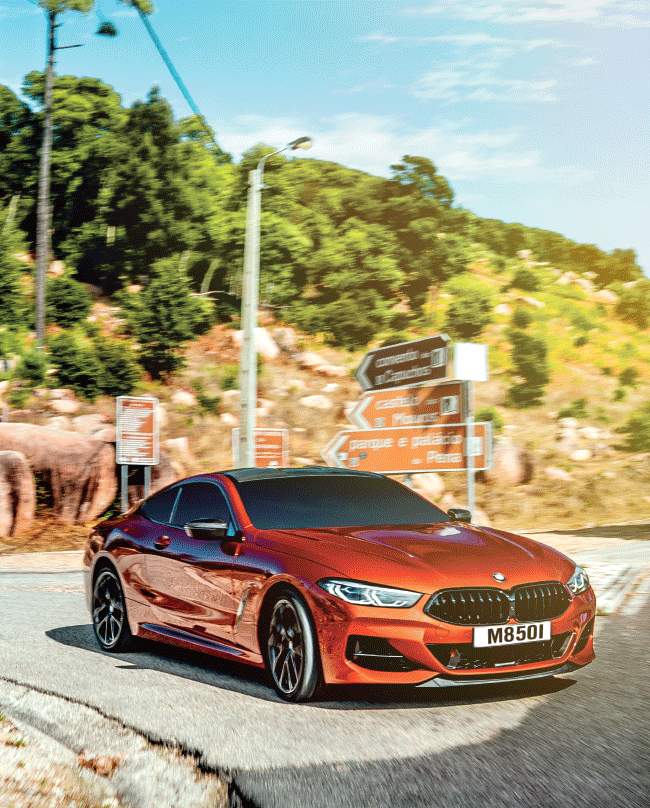
BMW M850i xDrive
All the hubbub of the past few months has been about this little Bavarian. Or not so little – BMW’s latest 8-Series will go head-to-head with the leviathan of the segment, the Mercedes-Benz S-Class cabriolet, so ‘big’ is a given. 8-Series is essentially the coupé version of the 7-Series, so buyers get all the flagship niceties as well as a dose of sporting kudos.
It’s pretty too, arguably better looking than the topless Benz. Most notable is the space – this is a genuine four-seater, meant to be all things to all people, and the trick boot means the soft-top folding roof doesn’t take up too much luggage space. Only one engine option powers the beast – in SA at least – Munich’s twin-turbo 4.4-litre V8, good for 390 kW and 750 Nm of torque.
To contain and control all that twist and shove, there’s an eight-speed Steptronic Sport transmission, adaptive M suspension with electronically controlled dampers and all-wheel drive (xDrive) system, necessary given the impressive performance figures (a claimed 0–100 km/h time of 3.9 seconds and a governed top speed of 250 km/h).
It will be interesting to chart its sales trajectory; BMW is to be congratulated on a brave move, putting so much metal on the road in an era of less, less, always less…

